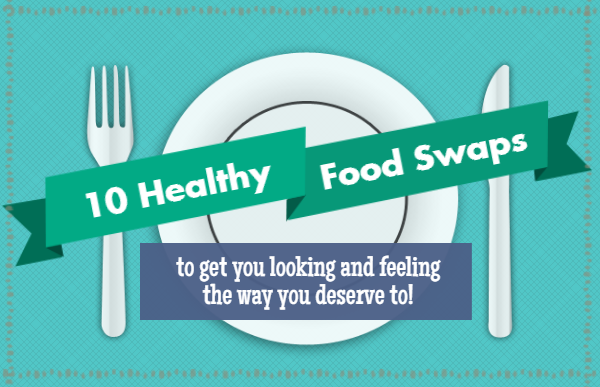Why butter is better
The most unfortunate resistance to eating healthy is the connotation that in order to do so you must suffer through steamed broccoli and tofu every night. In reality, a healthy, real food diet can (and should) include foods that are insanely delicious.
The problem is that we’ve lost touch with our sensory signaling, and we automatically think if something tastes good, it must not be healthy. Our ancestors didn’t choke down their meals in the name of health, they listened to their bodies’ innate wisdom and coupled it with the culinary traditions that had been passed down from previous generations. The traditional food that has endured the most tragic death from our modern diet is not one most people would consider a health food, and I hope that I can help to clear that misconception.
Sometimes it’s difficult not to question Mother Nature’s decisions: natural disasters, disease, women’s *ahem* plight. But butter is not one of these questionable decisions. Butter is a gift to humans, and it should be enjoyed as such. Even though this liquid gold has been used by traditional societies for thousands of years, it has been wrongly vilified by the American mainstream media since the early 1950’s.
What is now known as the “Lipid-Hypothesis” points to fat, especially saturated fat, as being the causal link between diet and heart disease. What is less known, is that the studies that form the basis of this theory were inherently flawed. In one such study, test rabbits fed high levels of saturated fat showed elevated cholesterol levels and greater incidence of heart disease. But there is a reason cartoon depictions of bunnies show them gnawing on a carrot and not a chicken wing. Rabbits are herbivores, unlike humans, whose bodies are designed to eat both plant and animal. As humans, we need the saturated fat found in butter and other animal products in order to be healthy.
We also need the cholesterol it contains (I know, gasp!). Our cells are made of cholesterol, and our bodies require it to form hormones, vitamin D, and for proper brain and nervous system function (our brain is about 60% fat, 25% of that being cholesterol). If you question the health of cholesterol rich foods, you may be surprised to learn that the food with nearly the highest proportion of the stuff is breast milk, because this fat is so essential for growth in babies and children.
Despite this fact, margarine producers in the 1950’s seized on the opportunity these erroneous studies lent, and along with The American Heart Association (which depends on large donations of cash from the vegetable oil industry) promoted the use of vegetable oils to replace butter, which would have its reputation forever tainted thereafter.
Notice I didn’t say “butter isn’t bad for you after all”, even though that news alone would be cause for celebration. It’s not that butter isn’t that bad, it’s that it is in fact very healthy. As Americans we seem to be ok with the idea that milk is healthy. Part of this is due to the vitamins A,D,E,and K that it contains. These fat soluble vitamins reside, as you may have guessed, in the milk fat. When the dairy industry removes the fat from whole milk to create reduced fat versions, they must later add in synthetic forms of the vitamins they removed in the process. Butter, being made entirely from milk fat, happens to be America’s best source for these vitamins, particularly vitamin A. In addition, eating foods with butter will aid in the absorption of other vitamins (is it a coincidence that cooking broccoli in butter is so delicious?) Still not convinced? Here are a few more credentials on butter’s resume
- Contains trace minerals manganese, zinc, chromium, iodine, and selenium
- Correct balance of Omega 6’s and Omega 3’s
- Contains CLA, or Conjugated Linoleic Acid*
- Strengthens immune system
- Alleviates joint pain and arthritis
- Beneficial for GI health
- Contains antioxidants
- Prevents osteoporosis and builds strong bones and teeth
Isn’t it liberating to find out that something so undoubtedly delicious is an integral part of a healthy diet? It really is a shame that some ill construed data from so long ago has had such a lasting negative effect on butter’s place in our lives. It’s like those guys who go to jail for 40 years and are released after forensic evidence reveals they were innocent all along. Only the American Heart Association has yet to exonerate butter, or offer it any retribution for its now tarnished reputation. But things are looking up for the old guy, as recent studies reveal that reducing saturated fat doesn’t reduce heart disease after all.
Your great, great grandmother didn’t question butter. She also didn’t choose to use it because of its CLA content. She used it because it’s what her mother used, she could get it from the farm down the road, and it tasted amazing. When something found in nature is overwhelmingly delicious, I think we ought to use that as a biological signal that we should in fact be eating it.
As with all things that appear too good to be true (I just told you to eat more butter, after all) there is a caveat. Like with the case of farmed salmon, the industrialized food industry has found a way to crank out more cows (and milk), by feeding them an unnatural diet of GMO corn/soy and growth hormones. Butter from these sick and nutrient starved cows pales in comparison to butter obtained from healthy cows fed green grass.
*known for anti-cancer properties. Occurs only in grass-fed butter
*Butter has only a small amount of lactose remaining, so many people who cannot normally digest milk products can often tolerate butter. For those who are especially sensitive, ghee (or clarified butter) has had all of the milk solids removed. other sources: Nourishing Traditions, Sally Fallon Deep Nutrition, Catherine Shanahan MD http://www.theguardian.com/lifeandstyle/2013/oct/22/butter-cheese-saturated-fat-heart-specialist



Nice post Allyson. It’s interesting how society has adopted many false beliefs about food. I love that you are breaking through some of these.
I just had lashings of fresh home churned raw butter on a slice of homemade banana and coconut bread. The recipe came from Teresa Cutter The healthy chef. She’s an Aussie chef with a booming following here. I think you would like her!